ID-DOC: general search
Here you can enter a general keyword and perform a general search.
??? What are these question marks doing here? These represent tools which we know by a Dutch or French name, but who's English name is yet unknown. Suggestions are always welcome!
If you cannot find a certain tool, or if you experience other problems with this page, please let us know at info@mot.be.
Search for: tool
Showing search results 601 - 650
1,484 results found
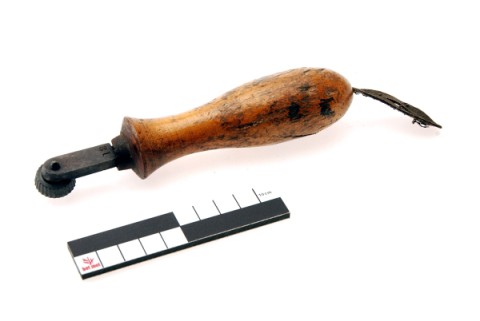
Fudge wheel
The fudge wheel has a grooved metal wheel (approx. 1.5-2 cm diameter) that
is attached to a metal, sometimes slightly curved shaft, which is provided
with a wooden handle. The total length is approximately 14-18 cm and the
wheel has 3 to 7 grooves per centimeter. The shoemaker uses the fudge wheel
to imitate a hand sewn seam on the top edge of the shoe sole or to secure
the stitches on that edge; it is always heated before use. There are also
fudge wheels with interchangeable wheels. The wooden handle is usually
hollow and can be unscrewed so that the wheels can be stored in it. The
wheel itself is held in place by a movable hook that closes around the
axis. [MOT]
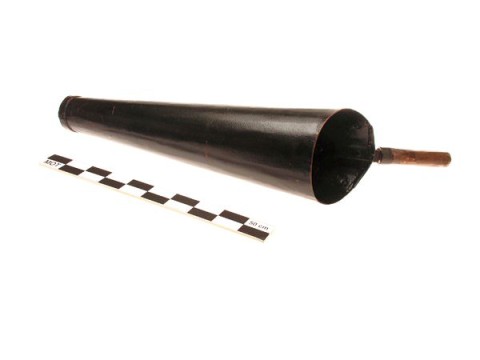
Funnel (coal)
During the baking of bricks in an annular kiln, small amounts of coal are
added from above. The coal is poured into a long narrow funnel with a coal
shovel (see coal scoop (brick maker)). It is held with the left hand while
the right hand empties the full scoop. [MOT]
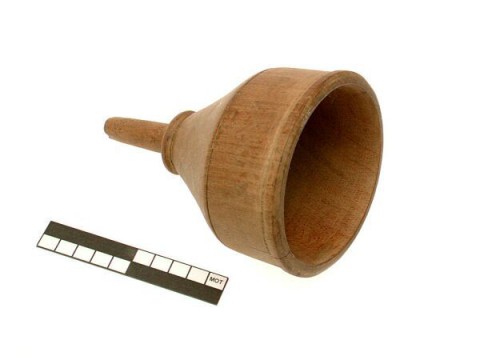
Funnel (kitchen)
Kitchen utensil (approx. 15-25 cm) with a hollow, cylindrical or conical
container with a tube at the bottom. It can be wood, metal, glass or
plastic. With a funnel it is easy to pour liquids or powdered substances
through a narrow opening, eg a bottle neck. [MOT]
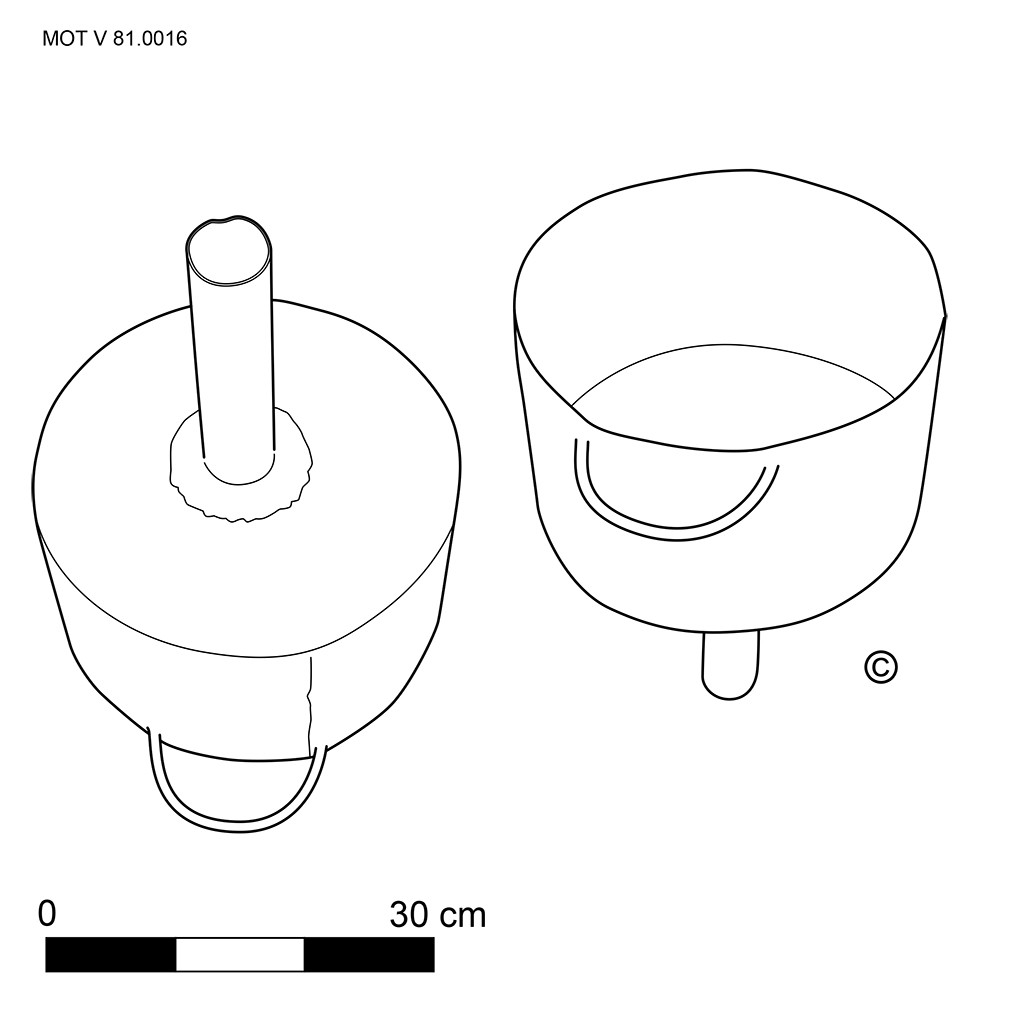
Funnel for liquid manure
The funnel for liquid manure (1). (1) Translation of the dutch word 'beertrechter'. The proper name in english is yet unknown.
Fur plier
Tongs (approx. 20-30 cm long) with long (approx. 8-10 cm), flat,
transversely grooved jaws, one of which is shaded on the outside. Usually
one arm is straight and the other bent. The furrier uses the tongs to
smooth and nail the fur to let it dry. She is held in the right hand while
the fur is put on with the left hand; then it is grasped by the edge with
the pliers and a nail is placed on it, which is driven into the board by
gently tapping it with the shaded underside of the jaw. See also these
frame-maker's plier and upholsterer's pliers. [MOT]
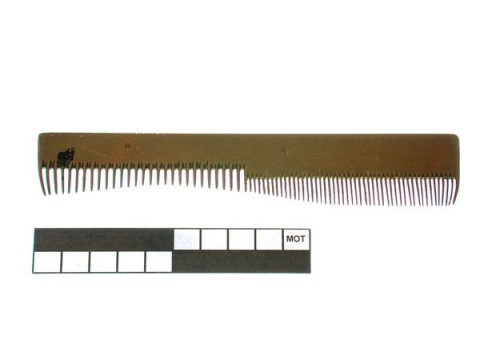
Furrier's comb
The furrier's comb is a copper comb of which one half is set with large
teeth (approx. 4 per cm) and the other half with finer teeth (approx. 7 per
cm); the tips are always blunt so as not to damage the fur when combing.
The furrier can also use another steel comb that is suitable for coarser
material, eg that has been affected by moths, or for which the copper comb
is not sharp enough. See also furrier's nail comb and seal comb.
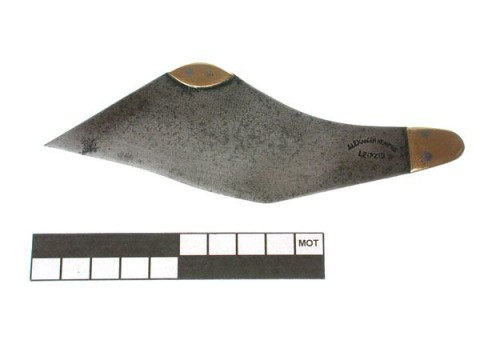
Furrier's knife (standard)
Knife specially designed for fur work (approx. 10-15 cm long), completely
made of metal and without handle, often with two copper beads, one on the
high back and one on the flared end. The index finger then rests on the
bulge on the back; the palm of the hand rests on the bulge on the end of
the knife. There is also a model with an interchangeable blade and a model
in pocket knife format (fur knife + small furrier's comb). When cutting,
the fur is lifted with the left hand so far that the cut comes clear of the
table; so the hair is not cut. [MOT]
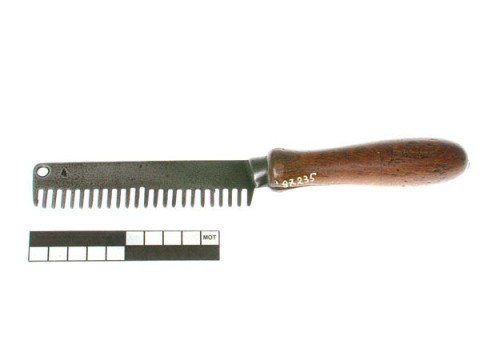
Furrier's nail comb
Steel furrier comb with coarse teeth (approx. 1 cm long; approx. 2 mm wide) and a wooden handle. The comb is used to loosen the piece of skin that has been nailed to a wooden board to dry. Such a fur nail fits just between the teeth of the comb, so that the nail can be lifted out of the board. The point of the comb is kept flat on the board and with the right hand one makes an upward movement along the nails. The fur is prevented from being stretched by holding back the skin with the left hand when removing the nail. See also the furrier's comb and seal comb. [MOT]
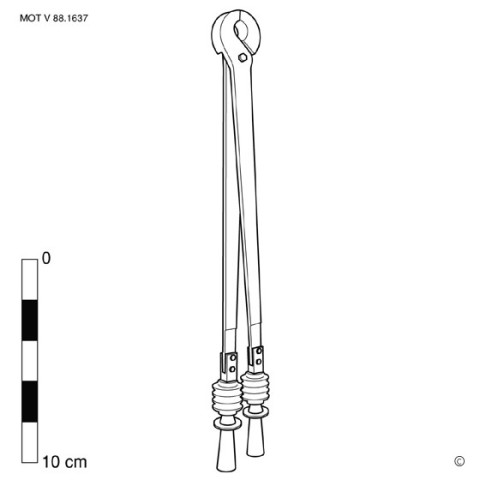
Fuse puller
The electrician uses these safety fuse pliers to install and remove fuse
cartridges. Depending on the type of cartridge - eg cylindrical cartridge,
glass fuse CEHESS, etc. - and thus also on the number of volts, a different
model of pliers is used. The tool consists of a plastic, formerly Bakelite,
pliers (approx. 20 cm) with rounded jaws. Sometimes a rubber sleeve is
included for handling glass fuses. For the cartridges of heavy fuses (up to
12000 V) formerly used in small processing plants (of eg lighting fixtures)
a long (approx. 115 cm) (1) wooden tongs with porcelain insulators on the
arms were used. The pliers may or may not be provided with a grounding in
the form of a cable. See also the key for safety fuse type DIAZED. [MOT]
(1) E & E: 353; mentions that these pliers come in two sizes and also shows
another model.
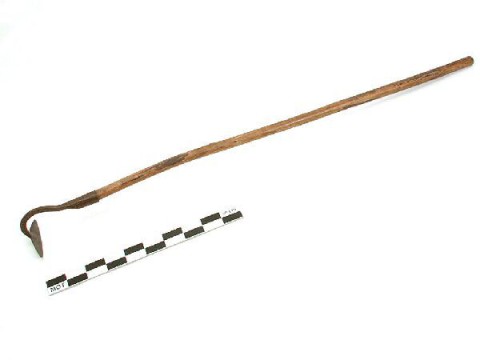
Garden hoe
Hand tool that resembles the regular hoe, but is lighter (approx. 500-800
g) and also has a longer handle (approx. 120-150 cm). With this hoe, the
gardener breaks the top layer of the soil to uproot weeds and / or, in case
of drought, to reduce evaporation. In contrast to the regular hoe, this
tool does not cut, but the blade is pulled superficially through the ground
while pulling it back, and the weeds are possibly pushed loose again when
cutting back. See also the scuffle hoe, small garden hoe, weeding hoe, hand
cultivator. [MOT]
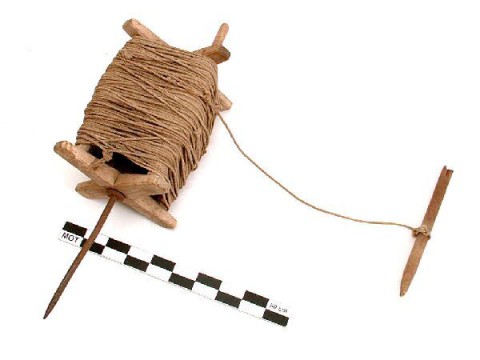
Garden line
This text can only be consulted in Dutch
<https://www.mot.be/resource/Tool/garden-line?lang=nl>
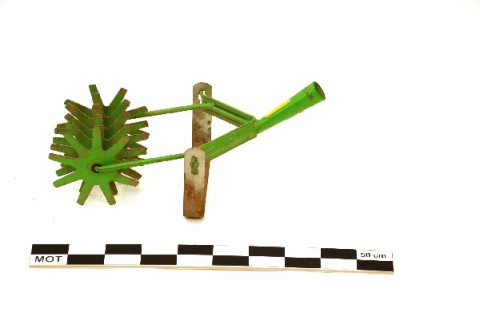
Garden pulverizer
The garden pulverizer consists of 3 to 5 rotating star-shaped wheels (1)
with a total working width of approx. 10-20 cm. Approx. 10 cm behind the
wheels is a removable (2) narrow (approx. 3 cm) and movable hoe blade with
upwardly curved ends. The wooden handle (approx. 150-170 cm) is inserted
into a socket that is connected to the working part by means of a bracket.
Together they form an angle of approx. 45 °. The garden pulverizer is
mainly used after digging to crumble up clumps. It is also used to house
fertilizer or seed or to aerate and work the soil between the rows of
plants. With the scuffle hoe you can remove the weeds between the rows of
plants. The whole is used with pushing and pulling movements. See also the
hand harrow and grubber with long handle. [MOT] (1) Jules Simon's catalog:
80, shows a clod breaker with 2 rows of wheels to crumble heavier soil or
used on large areas. (2) COENEN: 18 shows a model where the two working
parts can be used separately.
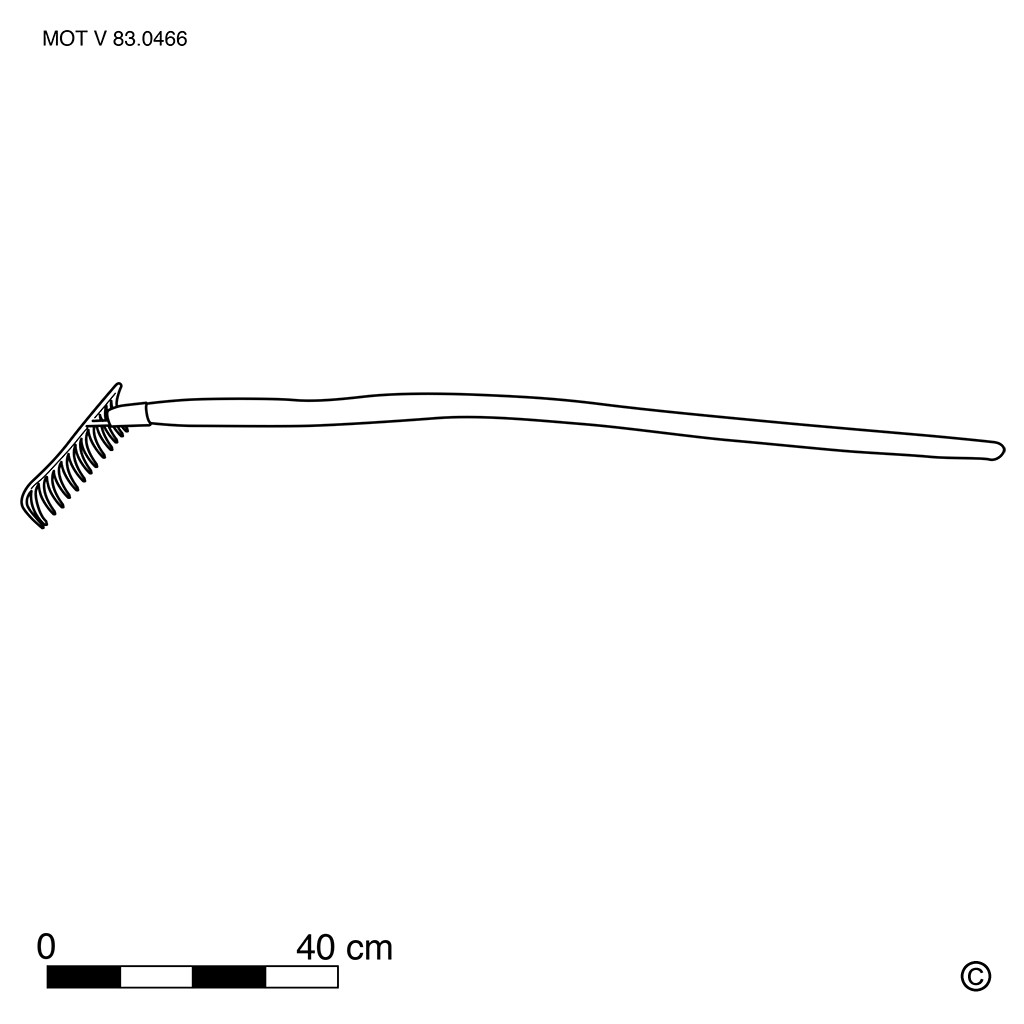
Garden rake
This text can only be consulted in Dutch
<https://www.mot.be/resource/Tool/garden-rake?lang=nl>
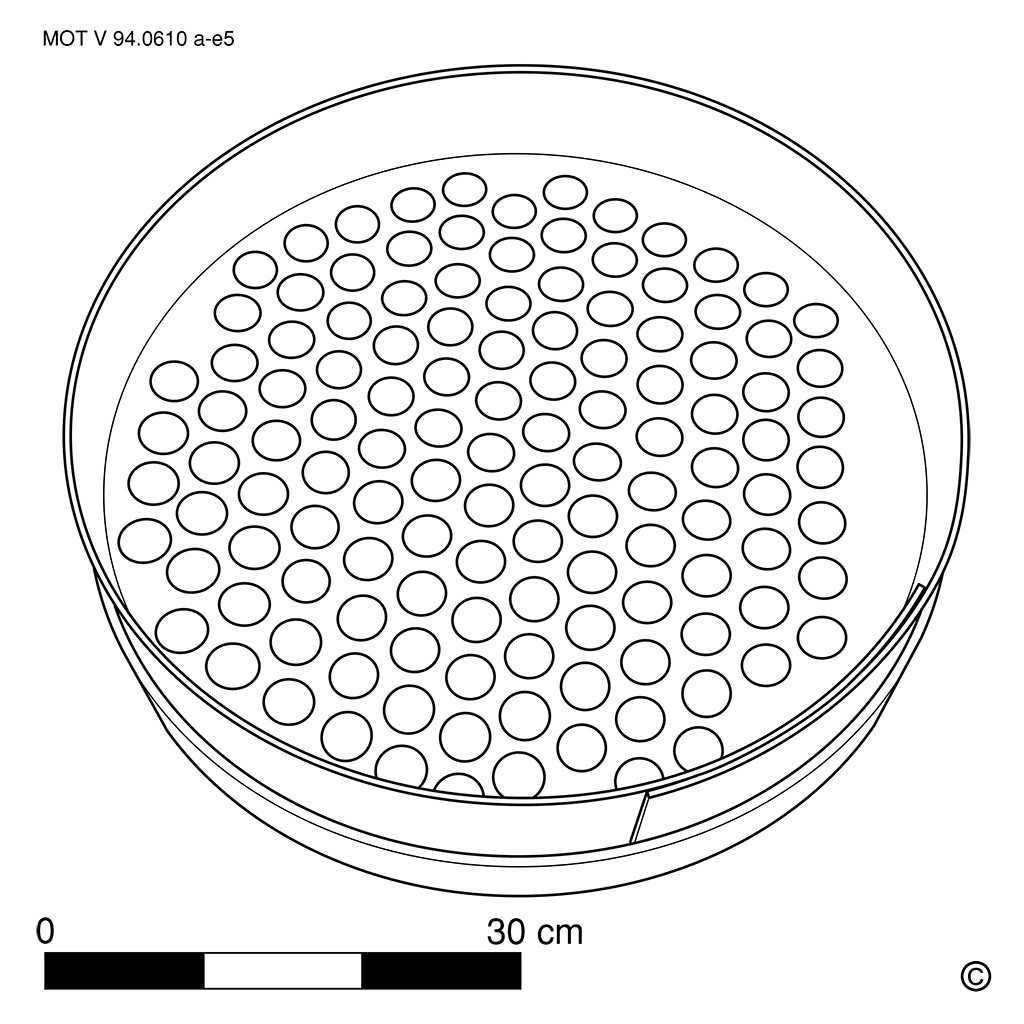
Garden riddle
Flower bulbs or tubers, regular in shape, can be sorted by circumference,
expressed in sieve size, by means of a garden riddle (1). The sieve
openings are a little larger than the actual circumference measurement,
especially if the shape is slightly irregular, as with tulips. The garden
sieve consists of a number of separate wooden sieve plates (approx. 60 cm)
in which there are holes of different diameters (approx. 2.5 cm; 3.5 cm; 4
cm; 4.5 cm). These rectangular or round plates fit in a wooden holder with
which you can sort the bulbs or tubers in ascending size while shaking.
[MOT] (1) Bulbs and tubers that are irregular in shape (and also rhizomes)
are also sorted by size, expressed in 1st, 2nd and 3rd size but this is
mainly done by hand.
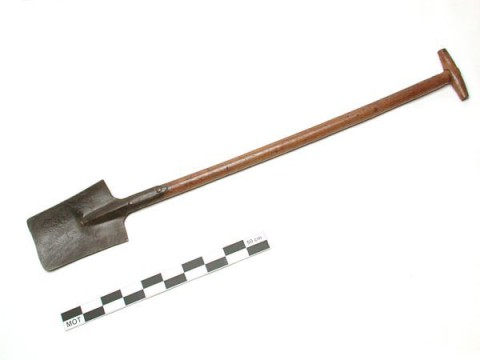
Garden spade
Today it is a spade with an iron, more or less rectangular or triangular
blade, about a third longer than it is wide (approx. 27 x 18 cm), which is
an extension of a ball, T or D handle (1) . The size of the blade depends
on the force required to lift and move the soil clod (2). The blade of the
garden spade is sometimes provided with a footrest so as not to damage the
shoe of the user. Exceptionally, an extension is attached to the top of the
blade of the garden spade to use the tool as a spade (3). In the past, the
garden spade was also made entirely of wood. She was shaken up then.
Dimensions and shape of the blade can vary greatly. In Ireland there are
even asymmetrical spades (4). The garden spade is used to dig the garden or
field, to transplant crops and to dig (5). [MOT] (1) Tool length can vary
widely depending on the region. In Belgium, for example, garden spades of
about 110-120 cm are used, in Italy tools of 160 to 210 cm are used (see eg
CENCELLI & LOTRIONE: 172). (2) For...
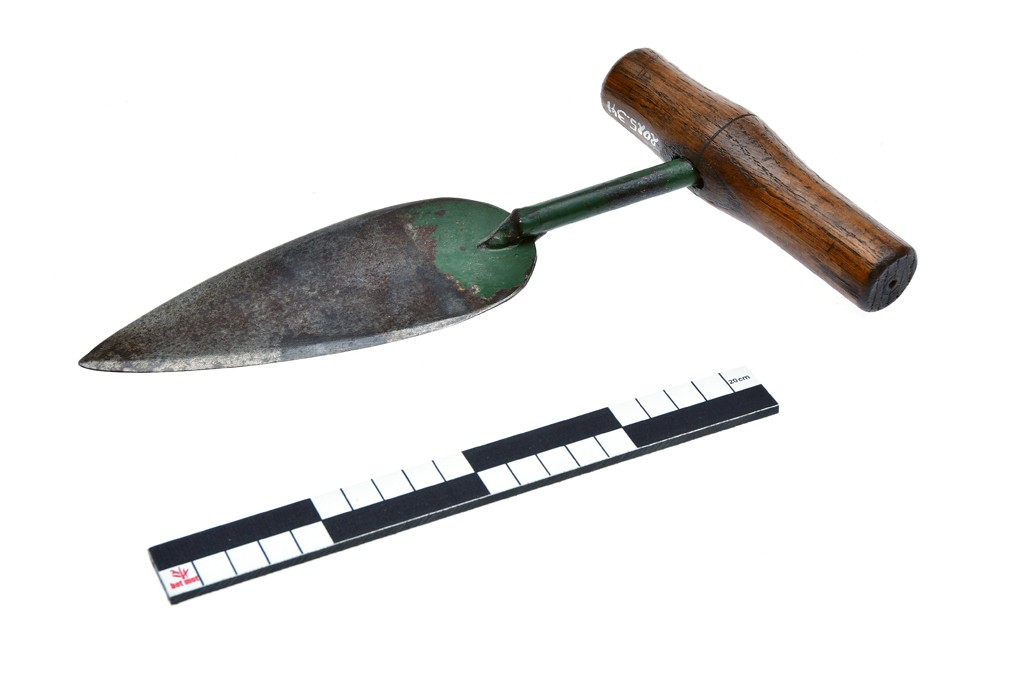
Gardener's planting knife
This text can only be consulted in Dutch
<https://www.mot.be/resource/Tool/gardener-s-planting-knife?lang=nl>
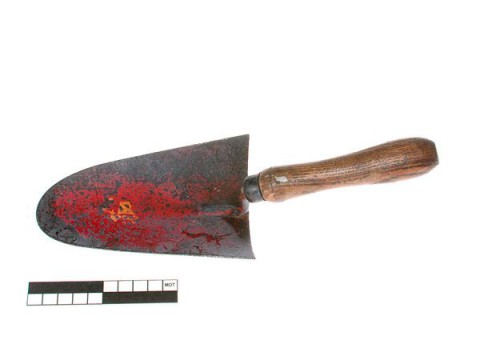
Gardener's trowel
This text can only be consulted in Dutch
<https://www.mot.be/resource/Tool/gardeners-trowel?lang=nl>
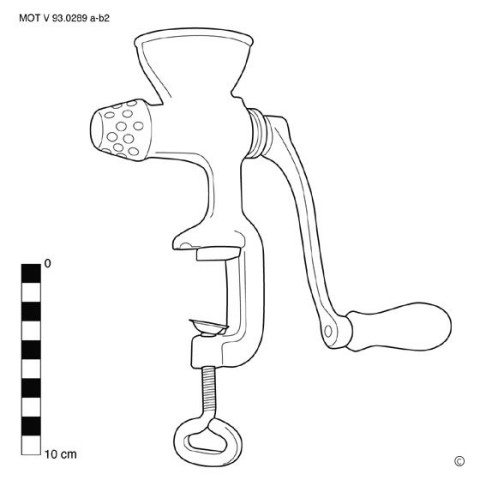
Garlic mill
This text can only be consulted in Dutch
<https://www.mot.be/resource/Tool/garlic-mill?lang=nl>
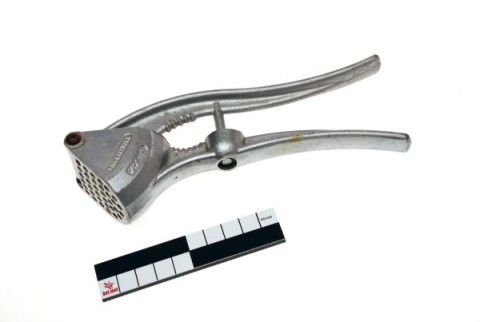
Garlic press
This text can only be consulted in Dutch
<https://www.mot.be/resource/Tool/garlic-press?lang=nl>
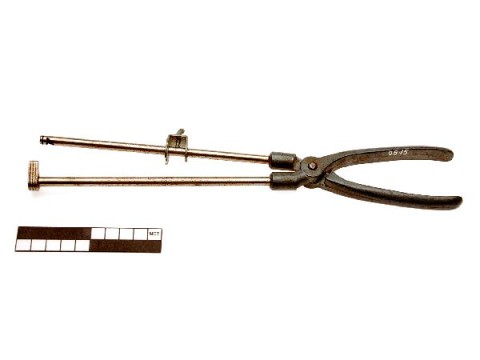
Gauge-glass cutter
(1) (1) Proper name unknown.
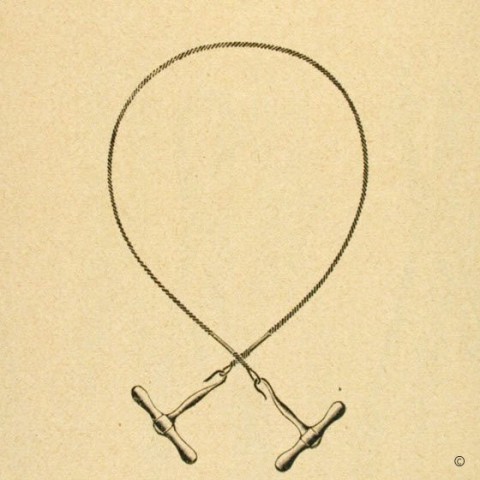
Gigli saw
Saw consisting of a thin, twisted steel wire (approx. 35-75 cm long) to
which a handle is hooked on both ends. It is used by the surgeon to cut
bones and can be distinguished from the wire saw used by the lumberman. The
steel wire can also be stretched in an arc-shaped frame with a T or D
handle. See also the amputating saw. [MOT]
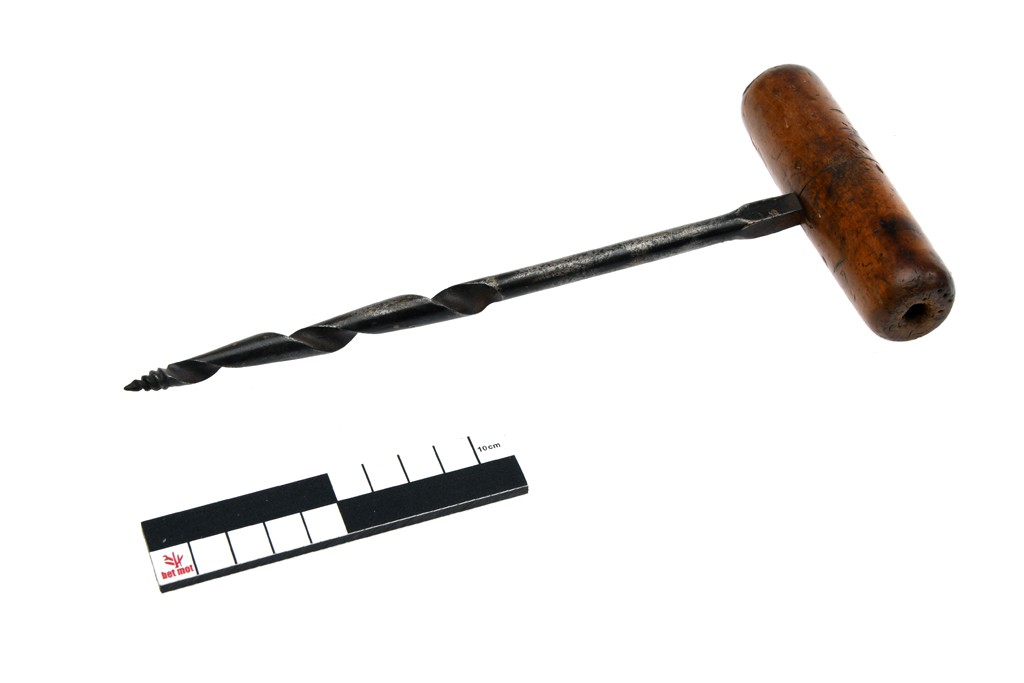
Gimlet
This text can only be consulted in Dutch
<https://www.mot.be/resource/Tool/gimlet?lang=nl>
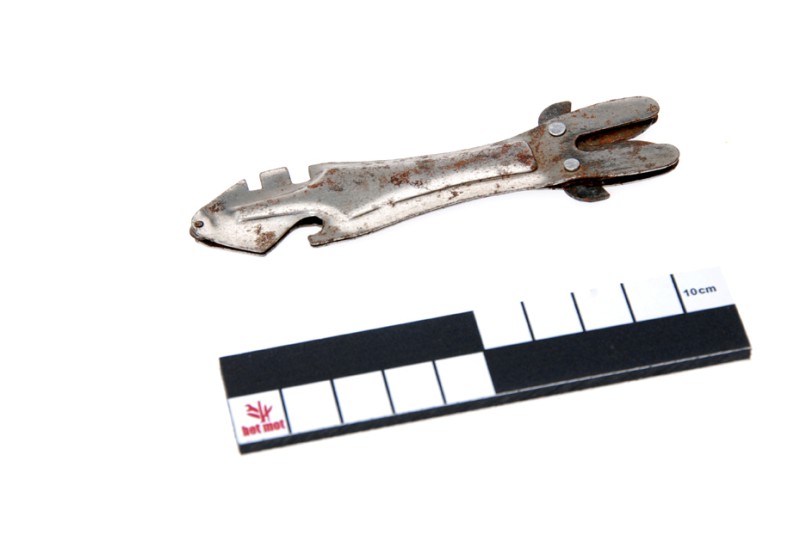
Glass cutter
This text can only be consulted in Dutch
<https://www.mot.be/resource/Tool/glass-cutter?lang=nl>
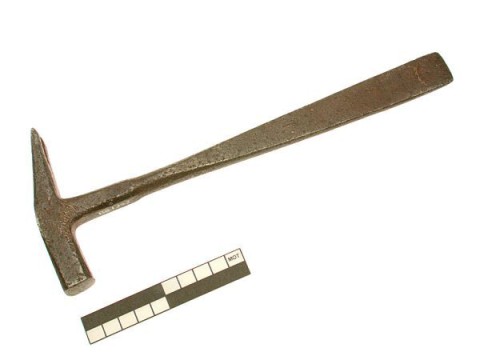
Glazier's hammer
Hammer (approx. 150-500 gr) with a narrow (approx. 1-2 cm) head used by the
glazier to knock small nails into the window frame. There are different
models: with two square faces, two round faces and with one round face and
a wedge-shaped pin. Often the handle of the glazier's hammer is finished as
a glazing lever. To be distinguished from the upholsterer's hammer. [MOT]
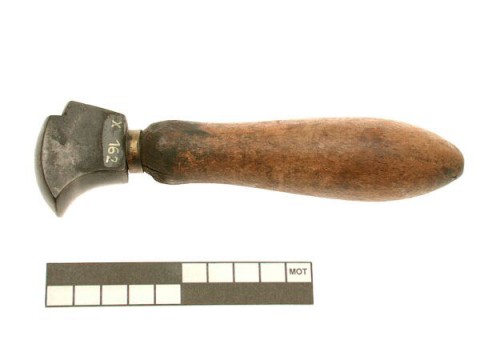
Glazing iron
The shoemaker uses this hand tool to give shine to the leather, especially
to the sole and heel. It has a beaked, iron, relatively wide (about 2 cm)
head attached to a wooden handle. After wax or polish has been applied, the
hot glazing iron is rubbed over the leather.Some glazing irons have one
stepped side that can be rubbed over the edge of the sole. [MOT]
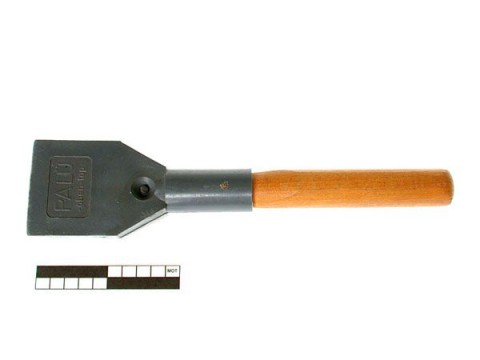
Glazing lever
The glazier can easily lift a large window with a glazing lever. It has a
stem (approx. 20 cm) with a rectangular, thick (approx. 2-3 cm) blade with
one straight and one sloping side attached to it. The tool is slid under
the glass with the sloping side down; once under the glass, the stem is
pushed down and the glass comes up. The glazing lever can be monoxile or
plastic with a wooden handle. [MOT]
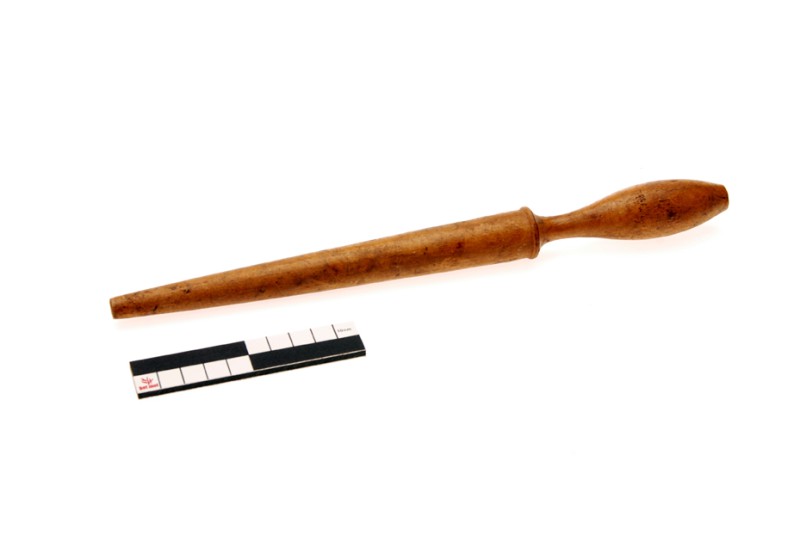
Glove stick
Elongated (approx. 30 cm), monoxile conical stick with a straight handle -
distinguishable from the curling iron - which is used to stretch and widen
the fingers of gloves, eg after washing. Glove stretchers can also be used
for the same purpose. [MOT]
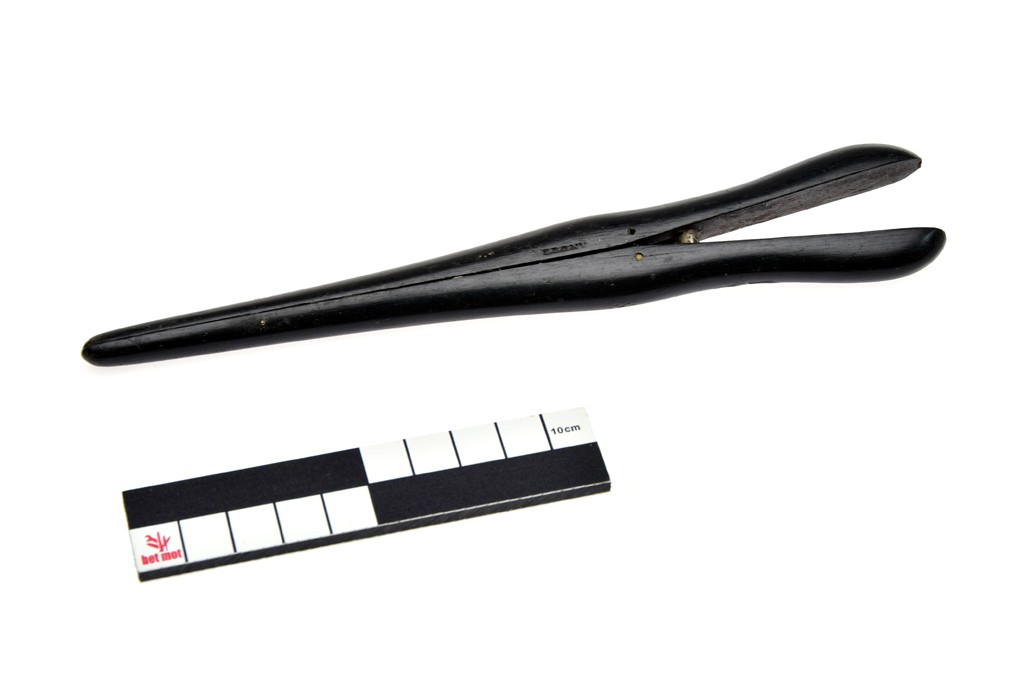
Glove stretcher
This text can only be consulted in Dutch
<https://www.mot.be/resource/Tool/247?lang=nl>
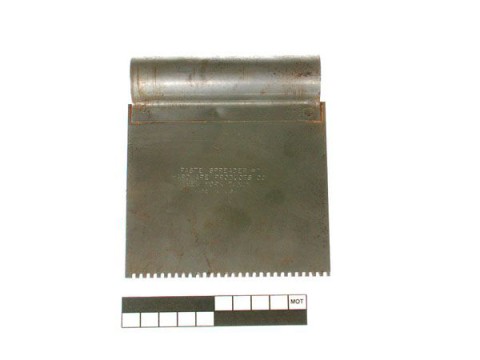
Glue comb
This manual tool consists of a sturdy, rectangular, steel blade that has
relatively short (approx. 2-3 mm) and wide (approx. 2-3 mm) rectangular
teeth at the bottom and which is set in the top a hollow metal handle in
cross section. It is used, among other things, by the tiler to spread glue.
[MOT
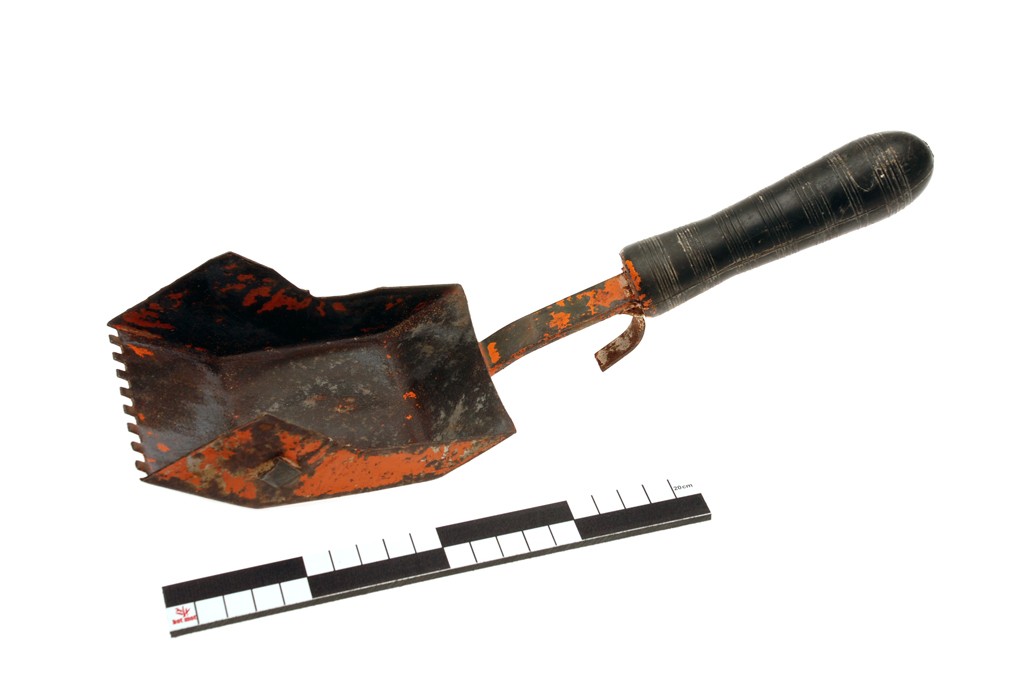
Glue comb for aerated concrete
This text can only be consulted in Dutch
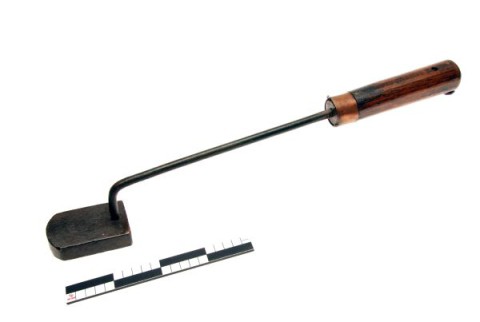
Glue iron
This text can only be consulted in Dutch
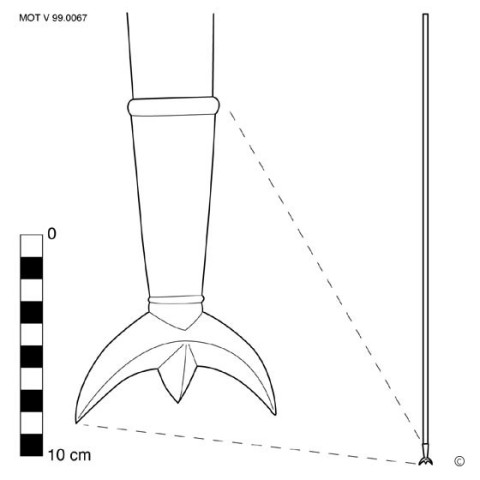
Goad / Trident of the cattle-driver
(1) (1) Proper name unknown.
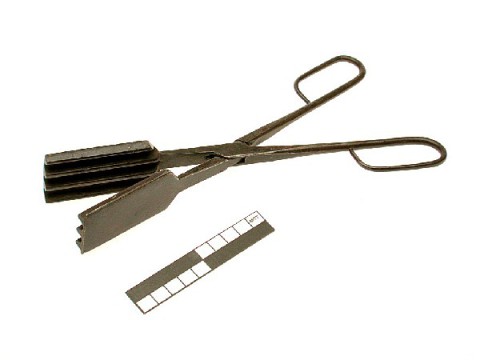
Goffer
In the past, the pleats in hats, lace, etc. were applied with a heated
goffer. The mouth of the tool is wide and wavy on the inside. Goffering
irons could also be used, but their mouth is narrower and consists of two
long round rods. Larger pieces were passed through a fluted roller. [MOT]
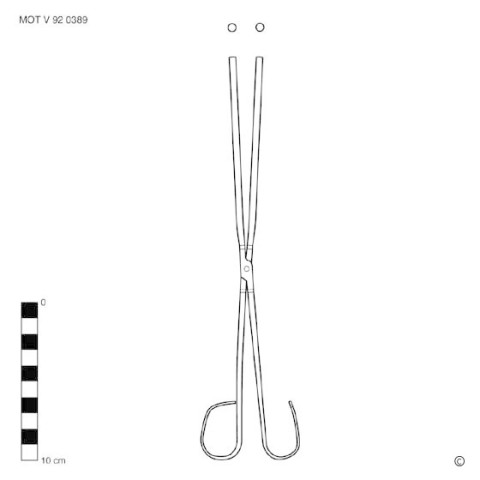
Goffering iron
This text can only be consulted in Dutch
<https://www.mot.be/resource/Tool/goffering-iron?lang=nl>
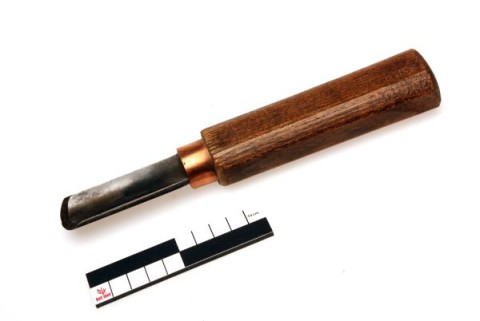
Gouge
This gouge is to be distinguished from the carver's gouge, the carpenter's
carving gouge and the clog maker's gouge.
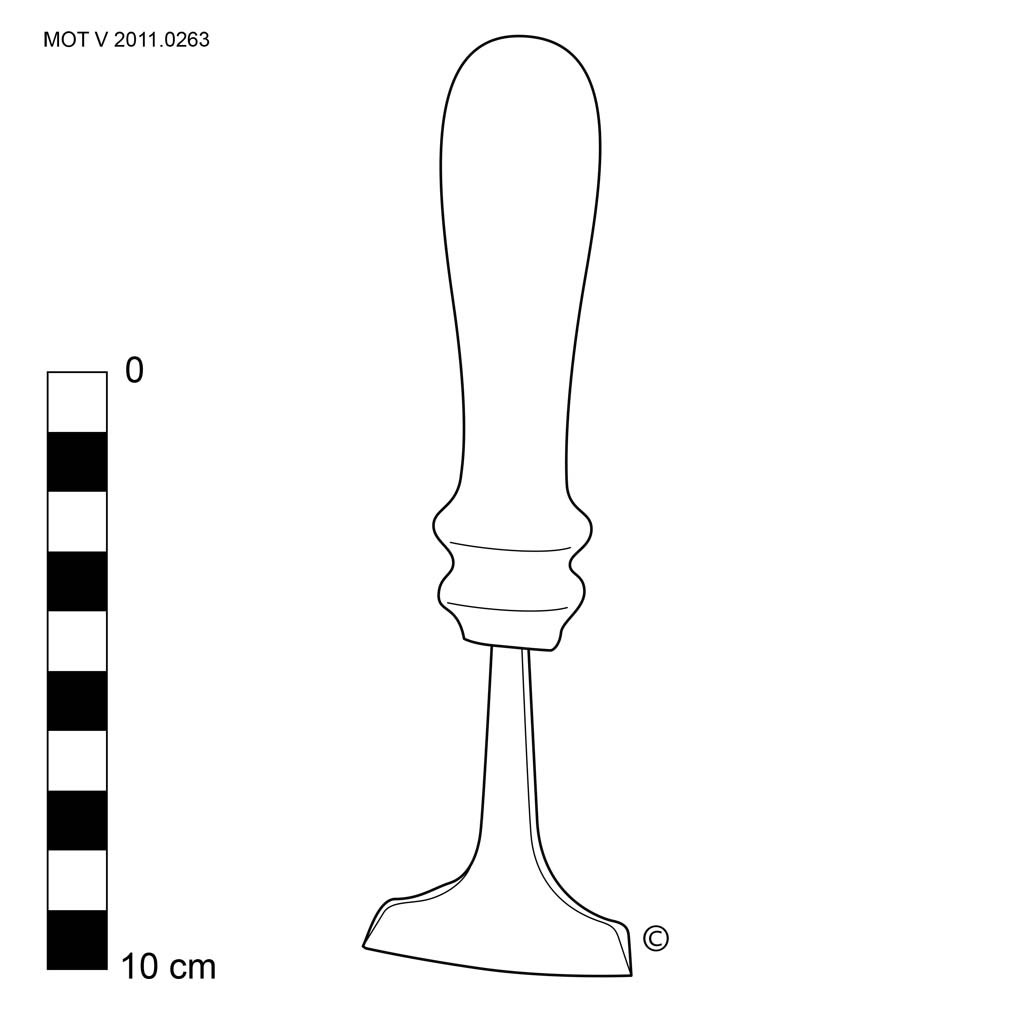
Gouge (bookbinder)
This text can only be consulted in Dutch
<https://www.mot.be/resource/Tool/gouge-bookbinder?lang=nl>
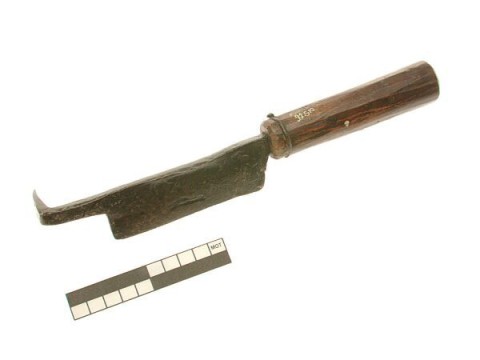
Grafter's froe
This text can only be consulted in Dutch
<https://www.mot.be/resource/Tool/grafters-froe?lang=nl>
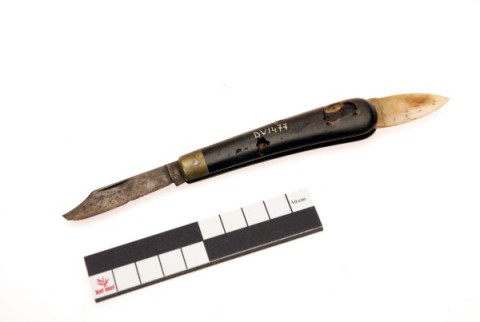
Grafting knife
This text can only be consulted in Dutch
<https://www.mot.be/resource/Tool/grafting-knife?lang=nl>
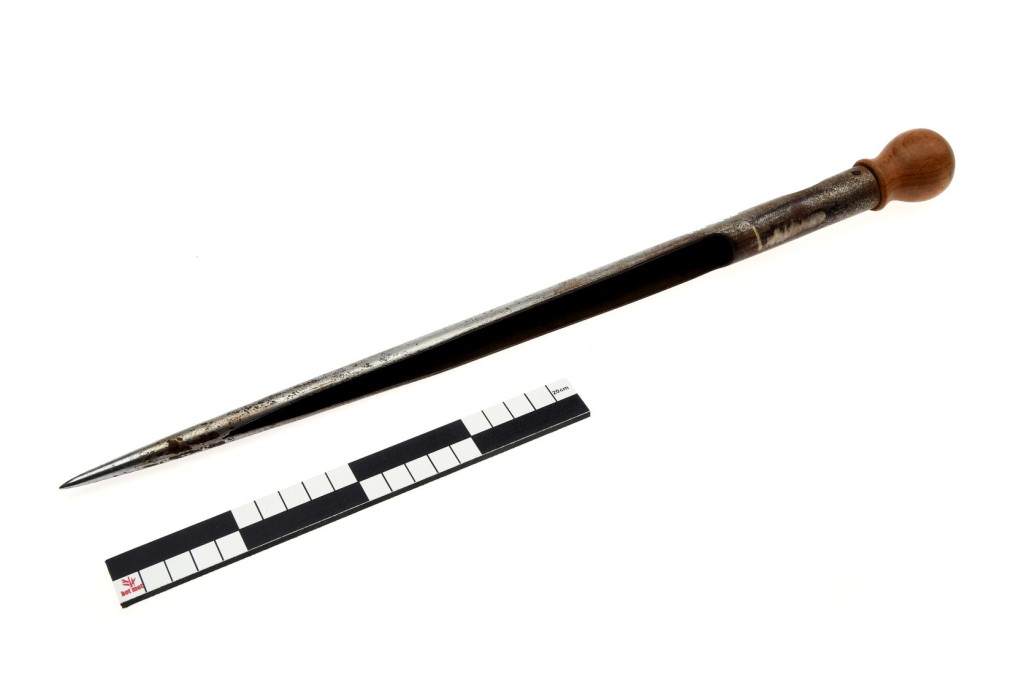
Grain sampler
This text can only be consulted in Dutch
<https://www.mot.be/resource/Tool/grain-sampler?lang=nl>
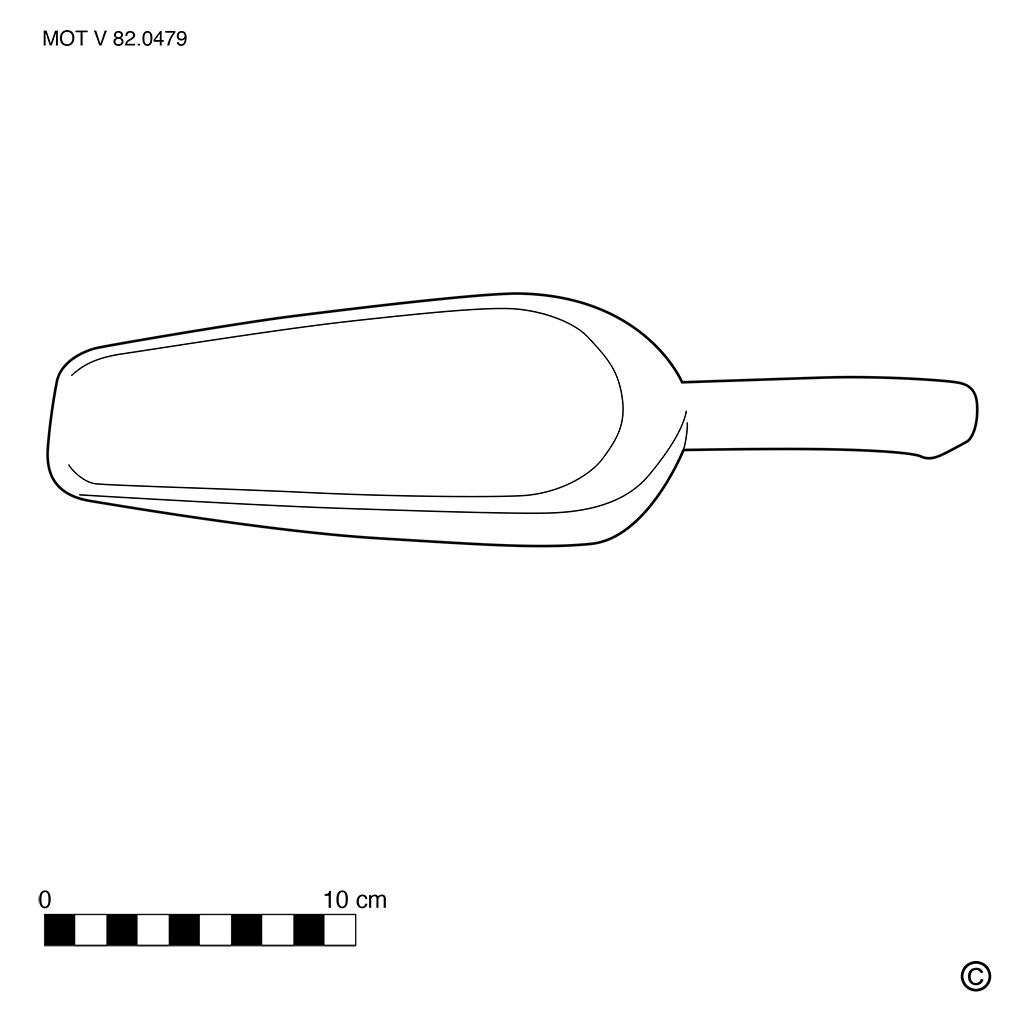
Grain scoop
This text can only be consulted in Dutch
<https://www.mot.be/resource/Tool/grain-scoop?lang=nl>
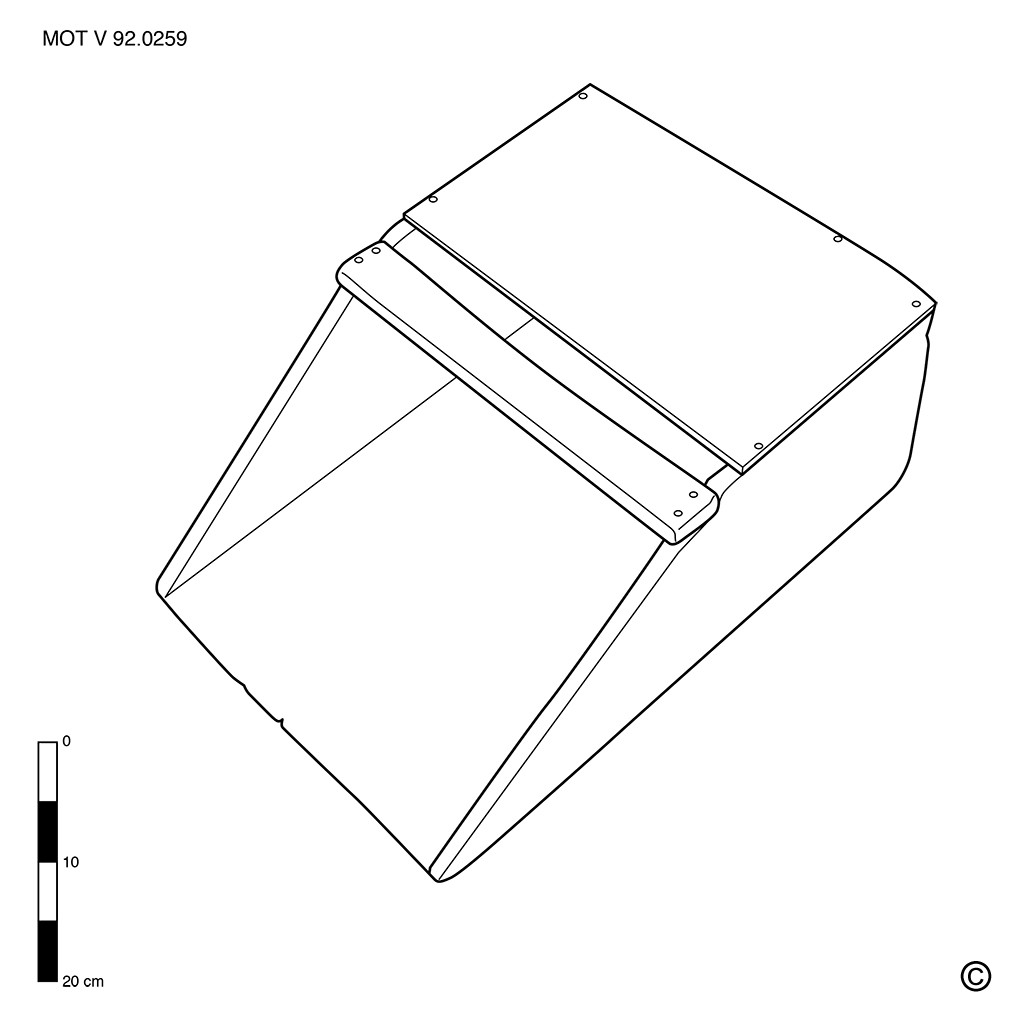
Grain scoop box
Wooden tool to scoop grain. See also the grain scoop and grain shovel.The
full text can only be consulted in dutch. [MOT]
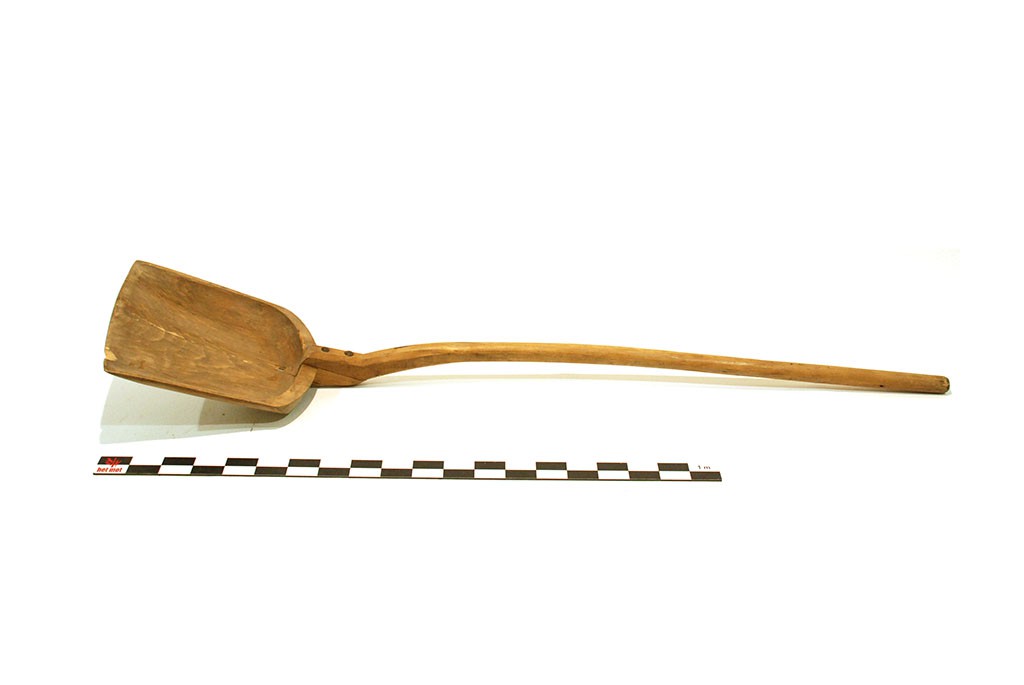
Grain shovel
The grain shovel is a wooden shovel (approx. 150 cm long) used to stir the
grain and to scoop it into the winnowing machine and bags. See also grain
scoop and grain scoop bin. To be distinguished from the mould board shovel.
[MOT]
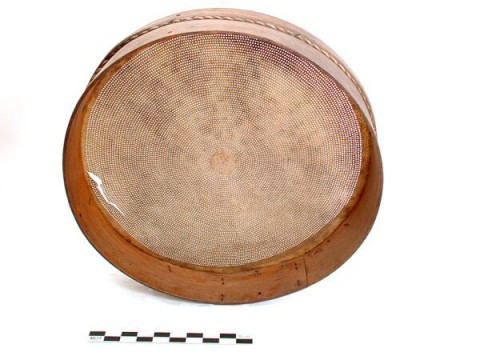
Grain sieve
After the grain has been threshed with the flail and the grain straw has
been removed, grains, chaff, clods, short straw, stones and other
impurities remain together. Some of the impurities are removed with the
help of the grain sieve. By shaking the sieve back and forth, the grains
fall through, leaving chaff and short straw behind. The grain sieve is also
used to separate chaff from dust / sand (1). The flax worker also uses a
grain sieve to separate the linseed from the chaff after threshing (see
bruising mail). The grain sieve is a large (diam. 50-100 cm) round sieve
(2) with 2-3 wooden rings (height approx. 10-20 cm) between which a flat
perforated bottom of metal (zinc) or leather (3) is clamped. In the latter
the small round or elongated holes (diam. 1-2 mm; center distance approx. 4
mm) (4) are punched with a punch. The center of the sieve bottom is often
decorated with a figure, a date, initials and / or place name. Sometimes 1,
3 or 4 holes or slots are provided in the edge...
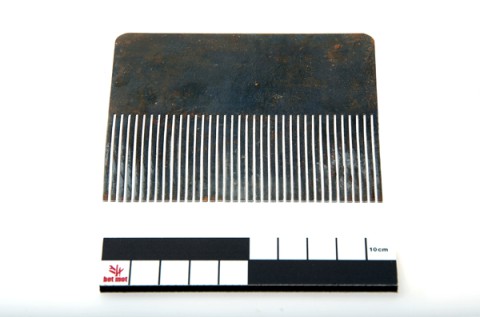
Graining comb
Steel comb with long (approx. 2.5-5 cm), flat and relatively flexible
teeth, which is used by the house painter to imitate wood. Often there is a
series of combs, all made of steel and of different widths (approx. 2.5-10
cm), with fine (approx. 1 mm) and coarse (approx. 3 mm) teeth, packed in a
tin box. There are also painters' combs whose teeth are much firmer and are
set in a wooden handle; these combs are used for marble. [MOT]
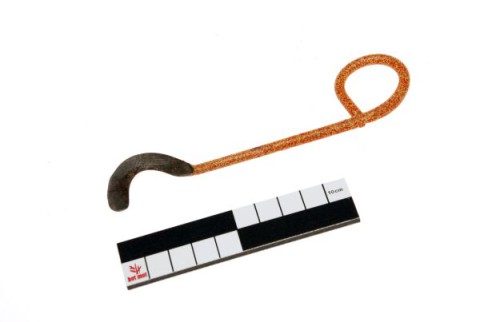
Grape knife
A miniature pruning knife (approx. 15 cm) with a short blade (approx. 4-5
cm) with which grapes are harvested. Not infrequently, the end of the
suture forms a ring where the little finger can be inserted. The knife is
mainly used in the Bordelais area. [MOT]
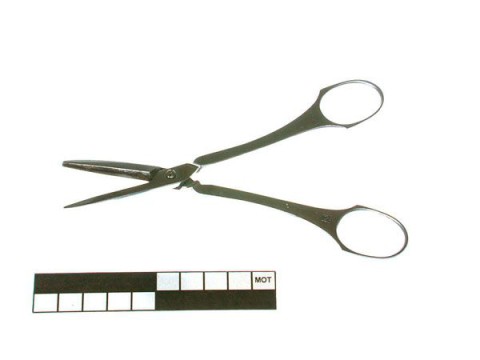
Grape scissors
With grape scissors you can easily cut grapes from a bunch at the table.
They are scissors with short (approx. 3-5 cm), narrow (approx. 5 mm) blades
with a blunt tip and long (approx. 10 cm) arms. The tips are blunt so that
the grapes are not damaged when cut. These scissors are often decorated
with grape motifs.See also grape shears. [MOT]
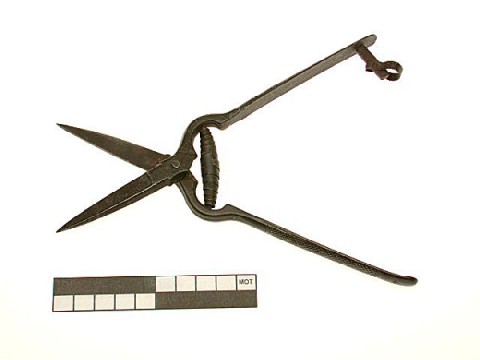
Grape shears
Grapes can be harvested with a grape knife or grape shears. With the latter
one obtains a much nicer cut than with a harvesting knife. The shears have
two narrow blades (approx. 1 cm) with a straight cut; the arms can be made
of metal or consist of a wooden covering around a metal plate. They are
held together by a ring that is located on the bottom of one arm and that
can be fastened around the other arm. There is a spring between the arms.
See also grape scissors. [MOT]
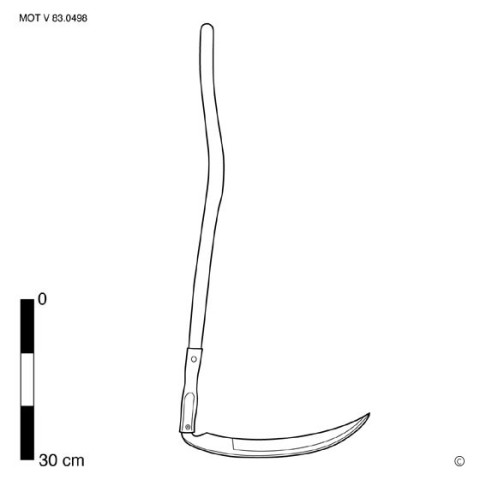
Grass hook
The grass hook is used by the gardener and do-it-yourselfer to cut some
grass and weeds on small areas. It is a small scythe consisting of a
slightly curved sharp steel blade (approx. 30-40 cm) with a wide back and
ending in a point, which is fixed at right angles to a wooden handle
(approx. 10-80 cm). The scythe with short handle is used stooping with one
hand; the one with a long, usually straight handle is held with both hands
and used while standing. Sometimes the long stem has a slight kink about 12
inches from the tip. See also the grass whip. [MOT]
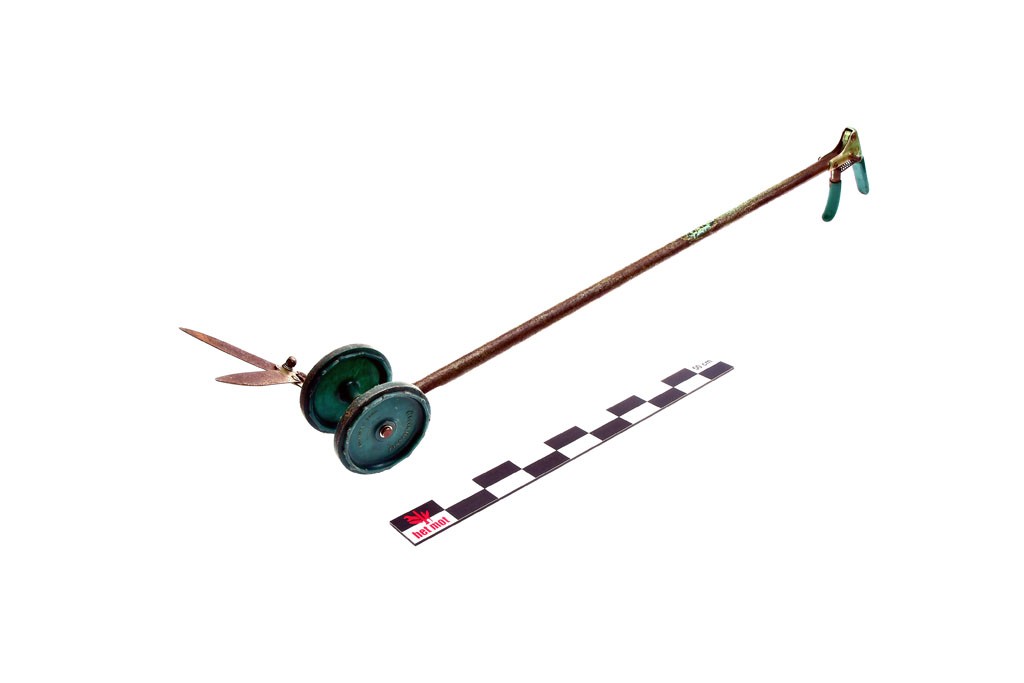
Grass shears
This text can only be consulted in Dutch
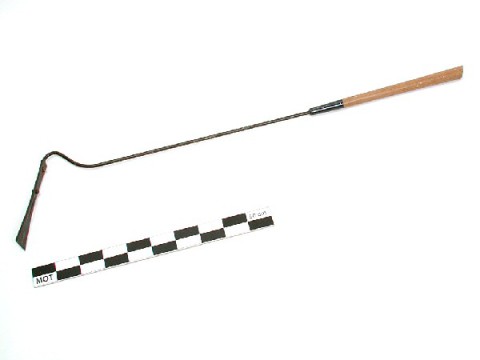
Grass whip
Light tool suitable for mowing the lawn in hard-to-reach places such as
along tree trunks, stones, fences and roadsides. The grass whip consists of
a thin blade (approx. 20-25 cm), serrated on both sides (1) or provided
with a cut on both sides and front (2). The handle is covered with wood or
rubber. The tool is swung back and forth in front of the feet, with the
blade lying parallel to the ground, cutting through the thin grass stems.
Due to the double-sided cut, it works on both sides. Another model (MOT V
2019.0007) looks more like a narrow machete with a curved tongue-shaped end
(3). See also the grass hook. [MOT] (1) According to LOGAN: 176, the grass
stems cannot bend away due to the serrated cut. (2) Catalog 1976: Wilkinson
Sword. The name on the world's finest garden tools. (3) The model of
manufacturer and distributor Martindale is sold as a machete
